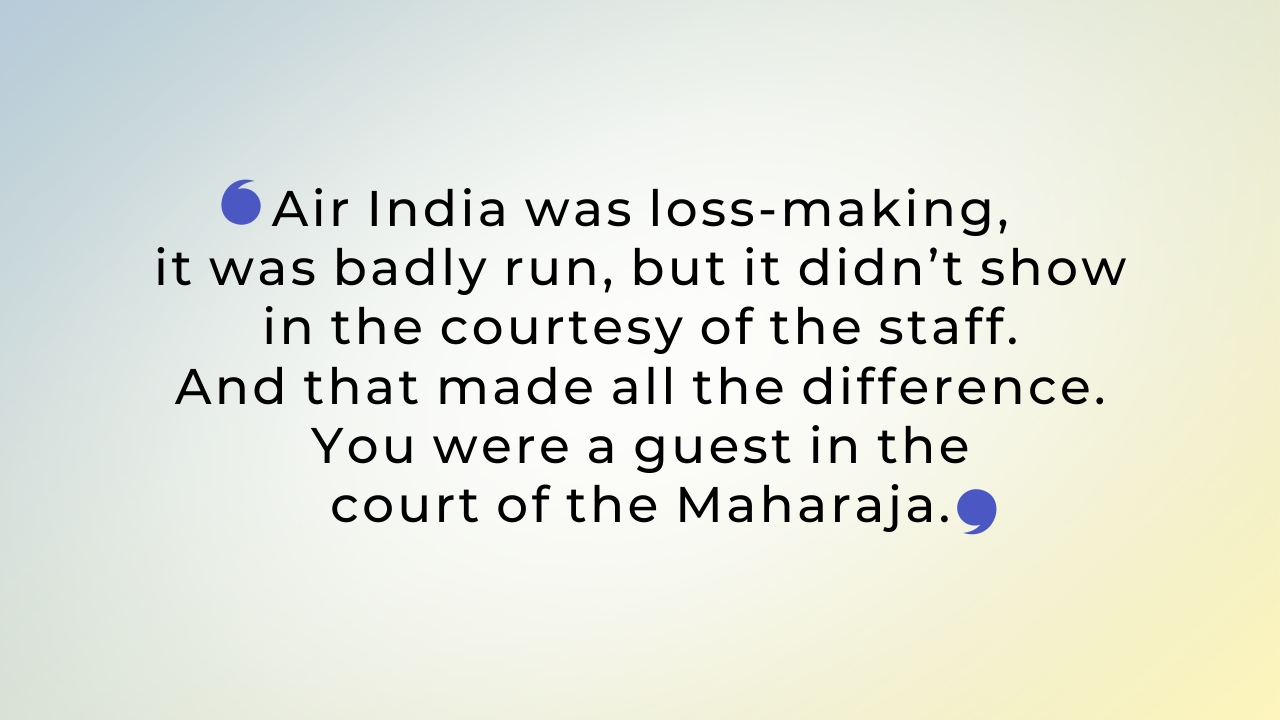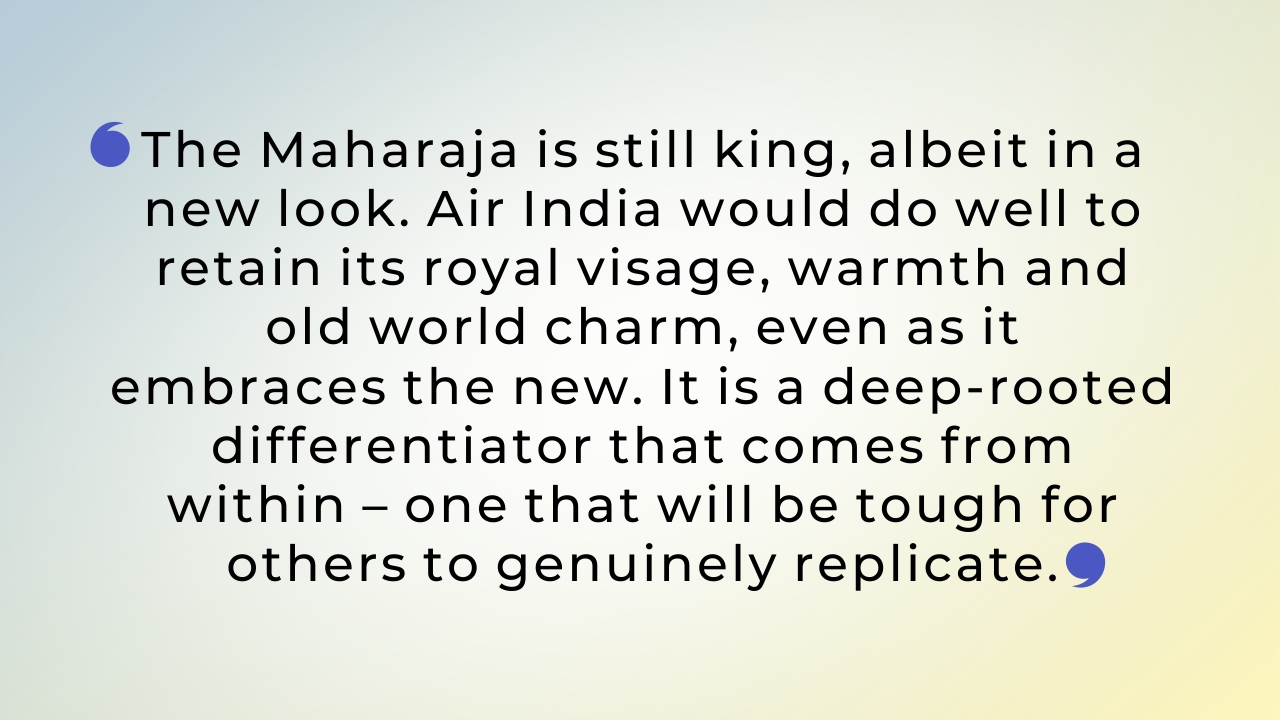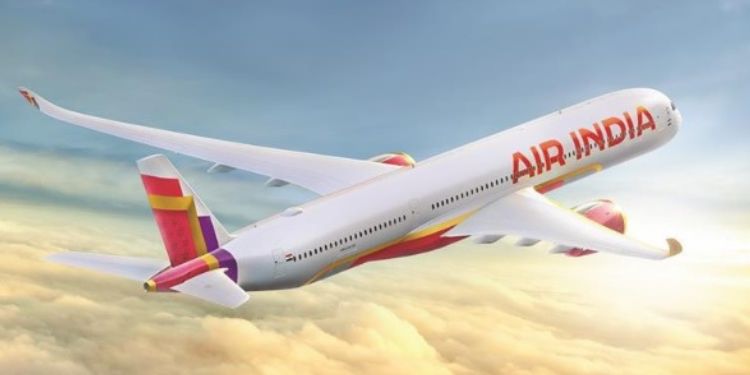During a casual conversation with a group from the advertising-marketing-media world, I mentioned that I fly Air India by choice. This was a time when Jet Airways was still in business and before Vistara took off (in 2015). People looked at me, surprised. One ad veteran took me aside. He said in jest: “I didn’t know you were into older women.” He was mocking the airline for its relatively older air hostesses. The quality of service in general is perhaps better on Air India, I contended, saying I would trade cold efficiency for warmth even if minor inefficiencies were part of the package. It’s somewhat akin to how we view our favourite kirana owner.
What caused this loyalty? And is it all pervasive? The answer to the latter is ‘no’. If I have to fly to Dubai and the fares are comparable, I would fly Emirates. Especially with family. The service is impeccable and no child who has experienced Emirates will want to fly on any other airline. In every other scenario, fares and timings being proximal, the airline you pick shows your brand loyalty. Air India has commanded that from me for a few reasons. And I realised over the years that I was not alone.
Why Air India?
Air India was India’s carrier (until the Tatas reclaimed ownership) and evoked nationalistic pride. A good part of that somehow continues because it is the Tatas who own it today. And contrary to the barrage of negative press on every small (and big) gaffe of the airline, my personal experiences have been largely pleasant, and in most cases better than ones with other Indian airlines. Granted, it was loss-making, it was badly run, but it didn’t show in the courtesy of the staff. And that made all the difference. You were a guest in the court of the Maharaja. There was a time when Air India had competition on the hospitality front, though not for the same reasons. That was from Kingfisher. That airline too made losses, but it too had a lot going for it on the customer service front.

Circa 2010, I was doing a cover story for a magazine on Indian airline brands that ended up under the title ‘Taming the Turbulence’. Kingfisher was very much the domestic airline of choice for everyone except perhaps those whose employers had deals with Jet Airways. When Kingfisher was unavailable, other options were considered. A long chat with Capt. GR Gopinath – the pioneer of low cost carriers in India and founder of Air Deccan who had by then sold the airline to Vijay Mallya’s Kingfisher – offered some valuable perspectives. On how airlines are positioned and why low cost airlines must not confuse their reason for existence. As a corollary, one understood why so-called full service carriers need to balance efficiency with service and poise.
Efficiency Can’t Buy Brand Love
Capt. Gopinath pointed me to Ryanair. Its CEO Michael O’Leary was famous for his comments. Or infamous, if you considered his choice of words and attitude to those he didn’t think highly of – and that included customers who expected ‘service’. While Japan’s All Nippon Airways was subtly asking passengers to use restrooms before they boarded (2009), as part of a programme to reduce weight on flight, fuel and carbon footprint, the Ryanair boss threatened to charge people to use the restrooms on board. He reasoned that removing three of the four rest rooms and putting seats in their place could lower fares. If allowed, he was mulling flying passengers standing. But even that gent seems to have come around.
The airline that once said its business was to take people from point A to B, on time, and at the lowest cost – and made money selling stuff on board and from those who needed to print their boarding passes – sings a different tune today. The lesson is that you simply cannot treat customers like baggage, even if they are flying what is referred to as cattle class. Yes, Ryanair retains some of O’Leary’s spunk in its handling of irate passenger comments on social media even now, but not all airlines can get away with that. Certainly not a full service carrier, and certainly not in India. This is where a key part of Air India’s legacy can make the brand soar.
The Maharaja is Still King
Air India’s differentiation is not just its legacy of being India’s national carrier, but also of not being a coldly efficient service provider. You genuinely felt through most interactions with the staff that the airline cared. You knew it when the pilot made the extra effort to avoid the clouds while taking off or landing in the monsoons. You experienced it when the pilot apologised for the delay in takeoff (for reasons beyond the airline’s control), and later humbly announced on time arrival despite a delayed take off. You were grateful when the cabin crew remembered your slice of lime to go with the tea. These things matter more than the visual identity of an airline.
That said, visual identity matters and the new look has drawn mixed reactions. The tail that was so ethnically Indian is starkly missing, but the change perhaps needed to be wholesome. The font is being criticised by some but that too will grow on us. The Maharaja hasn’t been done away with. A fitter royal will make an appearance soon, we are told. If I were to distance myself from the loyalist in me and view the new look, the ‘window of possibilities’ is promising.
The Maharaja is still king, albeit in a new look – one that we will get used to. Air India has done well to retain some of its royal visage and colour palette. It will also serve the airline well to retain all of its warmth, as it embraces the new. That is an ingrained differentiator that will be tough for others to genuinely replicate.

(The author is an independent marketing consultant and columnist; Editor, BrandSutra; and Group Consulting Editor, Uplift Medianews4u. Posts on X @Goks140)
Feedback: [email protected]

















